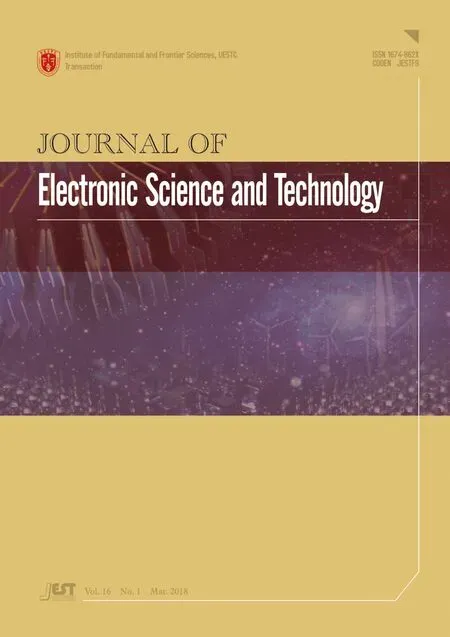UEs Power Reduction Evolution with Adaptive Mechanism over LTE Wireless Networks
2018-04-08RuchiSachanandChangWookAhn
Ruchi Sachan and Chang Wook Ahn
1.Introduction
Devices such as cell phones, email pagers, and moving picture experts group audio layer-3 (MP3) players have some specific functionality and hence are dedicated to the use of power leading to longer battery life. The design of such devices also contributes towards efficient power consumption which has resulted in the popularity of their usage. Therefore, a device for general purpose incorporating many other functionalities should have such design with minimal power consumption.Fig. 1 illustrates the setup of a mobile environment in which we assume connections from the Internet created and terminated at mobile end-points. The backbone of the mobile network is represented as a core network and also assumed as a full outfit network which connects the access points to the rest of the mobile network. The core network behaves like a wired multimedia environment with minimal bit error losses and congestion losses.
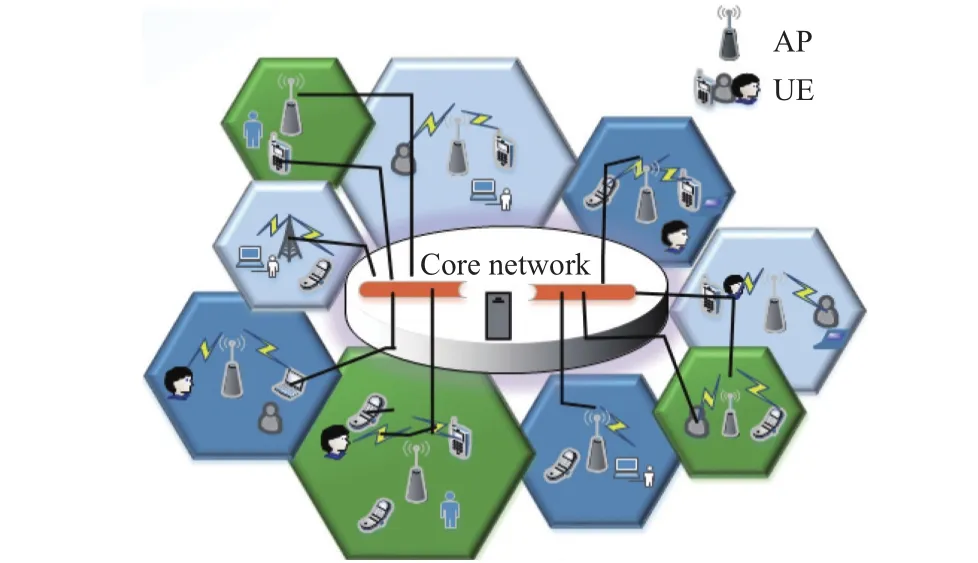
Fig. 1. Mobile environment with LTE networks.
Batteries provide the necessary energy required for the operations of mobile devices. The capacity of a battery employed in a device is limited which indicates an optimal power management system to be implemented in such devices.Internet streaming applications on mobile devices are popular due to faster broadband speeds and higher bandwidth provided in advanced LTE and 5G networks but constrained in longer usage time due to the limited battery capacity[4]. Battery power consumption can be slightly reduced by lowering the transmission rate of streamed data (reducing the streaming quality), as the power consumption depends on the data transmission rates[5],[6]. Thus, we propose an energy-efficient rate adaptation (RA) mechanism that can reduce the mobile battery power consumption during multimedia streaming.
The rest part of the paper is organized as follows. In Section 2, we review related literature. The literature study for the proposal is presented in Section 3, followed by the description of a system model which introduces the LTE user equipment (UE) power consumption method as a way to save battery power on mobile devices. Section 4 discusses the simulation results where UE’s energy reduction problem was solved by applying RA and without rate adaptation (WRA) based mechanism over LTE networks. Finally, Section 5 concludes the paper.
2.Related Work
Power saving schemes during video streaming have engaged ample research recently[7]. Some related studies proposed several streaming techniques used by commercial video providers, for instance, ON-OFF, throttling, bitrate streaming, and compared them in the context of power,bandwidth, and delay[8]. The authors in [9] measured the video streaming’s energy while using Wi-Fi and 3G. Nevertheless,they did not offer any useful solution to improve the energy efficiency regarding the long life battery consumption.
In [5], a study presented for the transmission of data to reduce battery power consumption, which was much more complicated while choosing a high-quality version for end users and required server support in advance. Therefore, most of the service network interface cards are compatible by default with the IEEE 802.11 power saving mode (PSM). Recently, the battery power consumption during streaming services is directly minimized, when the power saving mode is on in the devices. For instance, authors in [10] provided a method that maximized the sleeping time of the wireless network interface card (WNIC) in the LTE network. Therefore, the power saving mode suggested a client-centric arrangement to allow buffering on the server side so that streaming data could be able to send in bursts.
Moreover, to measure the power consumption for LTE UE,a study showed a standard model and parameters[11]. In this model, the power consumption is entirely dependent on the network component of UE based on the carrier aggregation.And in [12], it was shown that decoding multimedia contents consumes a large part of the energy and that the power required to decode audio or video depends on the computational complexity of the codec. Though, the authors had not defined the exact amount of energy consumed by the decoding part in mobile devices. Efficiently managing power on mobile platforms has always been a complex and challenging research problem so far, because of the several running applications and internal configurations, such as possible hardware configuration options,power states, and the interdependencies between computing,sensing, and networking resources, and their quality of experience (QoE)[13]-[15].
The researchers in [16] introduced the mechanism with the supporting of carrier aggregation (CA) with a complexity in UEs design regarding the receiver and transmitter. Some work has been presented on how this can be affected on the UE battery life after CA was standardized in the 3rd generation partnership project (3GPP). In [17], some contribution has been discussed with the effect on UEs complexity and battery life but the current power consumption was not considered. Our paper has considered saving the power consumption based on the running application of Internet streaming.
3.Power Consumption Model
The system model assumes that we have considered an LTE UE power consumption model. Traditionally, LTE has two radio resource control (RRC) states namely RRC_Connected and RRC_Idle according to the UE active or inactive status[18],[19]. As shown in Fig. 2, there are given three modes, respectively: Continuous reception (CR), short discontinuous reception (DRX), and long discontinuous reception (DRX). UE can be in one of these three modes at the RRC_Connected state, but UE is only in the DRX mode at the RRC_Idle state. In that situation, if UE is in the RRC_Idle state and also receives and sends the packet without considering the packet size, then the state will switch from RRC_Idle to RRC_Connected with a pretty substantial delay. Thus, UE enters CR after being endorsed to RRC_Connected by default and keeps observing the physical downlink control channel(PDCCH) to give a control message to UE[20].

Fig. 2. State transitions in LTE network.
The DRX inactivity timer Tinalso starts by an individual UE, which will be reset whenever UE receives and sends a packet to/from the server. Based on Tin’s expiration UE enters the short DRX mode without seeing any data activity at the starting point in each DRX cycle. An ON-period will follow, in which the UE turns its receiver on, to receive packets from the eNB (i.e., base station) and monitor whether there is any pending downlink transmission or not while UE is in short DRX.
教师要通过微课平台随时查看学生的学习进度和所提问题,以便有针对性地设计课堂教学活动,突破重难点知识:1.定理的几何意义:至少存在一点P(ξ,f(ξ)),该曲线y=f(x)在点P(ξ,f(ξ))的切线平行于曲线两端点的连线AB;2.定理只论证了ξ的存在性,ξ∈(a,b),不知道ξ的准确数值;3.几种等价表示形式
Thus when the short cycle timer starts, UE switches to long DRX if there is no data activity. Else, UE goes back into CR. If there is any data transfer, then every time UE enters CR. And then UE starts the tail timer, which is reset whenever a packet is sent or received by UEs. When expires, UE breaks from RRC_Connected to RRC_Idle and the allocated radio resource is released.
Based on Fig. 2, note that Ttaiicoexists with Tiand Tis, so the UE overall power consumption model in LTE is defined as(1) with the unit of Watt:

where V is the binary variable expressing whether the UE is in RRC_Connected; VC, Vid, and VDare binary variables indicating that UE is in connected mode, idle mode, and DRX mode, respectively. Similarly, PC, Pid, and PDare the power consumption in the connected mode, idle mode, and DRX mode, respectively.
The future UE model depends on the transmits (TX) and receive (RX) power levels, downlink (DL) and uplink (UL)data rates, and RRC mode[21]. The RRC_Connected mode is divided into baseband (BB) and functional blocks. BB block includes the TX baseband (TXBB) and RX baseband (RXBB).The radio frequency (RF) functional blocks which define the power consumption as a function of either TX or RX power level (L) and data rate (R). Fig. 3 shows the model which is divided into blocks, where each block has a different parameter. For instance, the transmit power LTXin the TXRF initially affects the power consumption of that block.
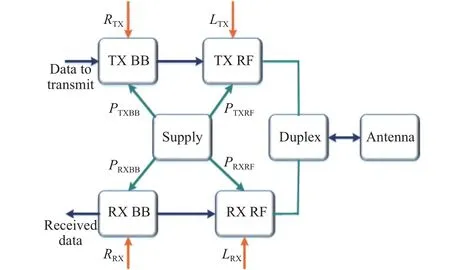
Fig. 3. LTE cellular system power model.
The function of the block can be evaluated empirically by varying the function-specific parameter like RTXof the TX BB,at the same time observing the other parameters, such as LTX,RRX, and LRXand a level where they influence the measurement at least. Based on Fig. 3, the RRC_Connected mode power consumption is defined as:


where PCis the power consumption in the connected mode;Ponis the power consumed when UE is ON, PRXis the power consumed when the receiver is actively receiving;PTXis the power consumed when the transmitter is actively transmitting. And in (2) and (3), PRXBBis the power consumed of RXBB; PRXRFis that of RXRF; PTXBBis that of TXBB; PTXRFis the power consumed in TXRF. During the simulation, the UE energy level is decreased by using RA mechanism based on calculations.
4.Results and Discussion
In this section, the performance evaluation results of the proposed algorithm are presented. At first, we have analyzed a power level comparison between RA and WRA based schemes.We also showed the energy level with increasing and decreasing the throughput with and without recharging. Finally,this paper conducted average power consumption over picture resolution in two different scenarios such as online streaming and offline playback. Table 1 lists the simulation parameters which we have considered in this paper.

Table 1: Simulation parameters
Based on our experiment and results, total power consumption during streaming over LTE in scenarios using RA and WRA is shown in Fig. 4 and Fig. 5. The LTE power consumption is calculated based on (1) and (4) as described in Section 3.
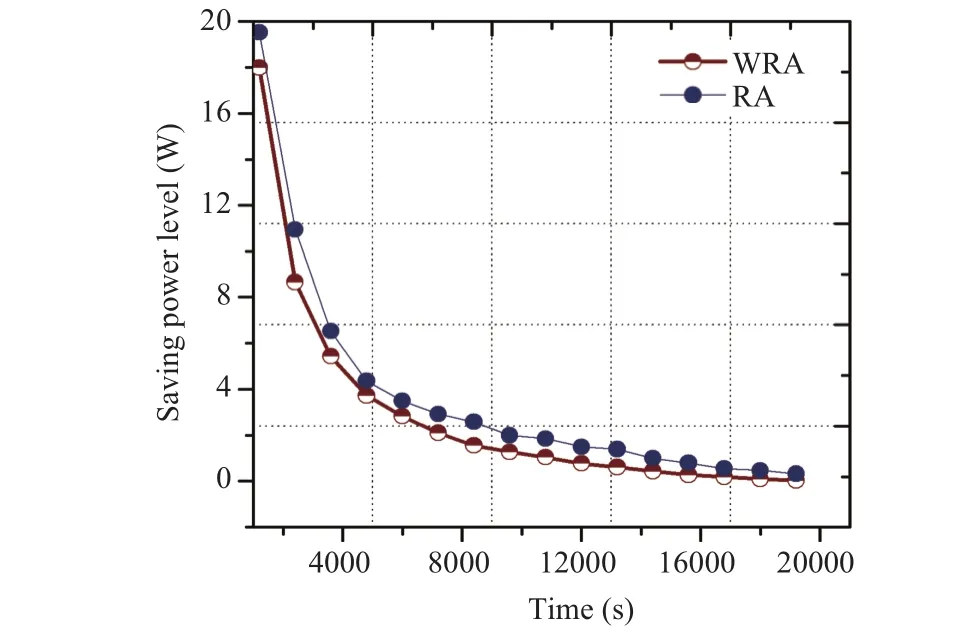
Fig. 4. Energy level with power-ON.
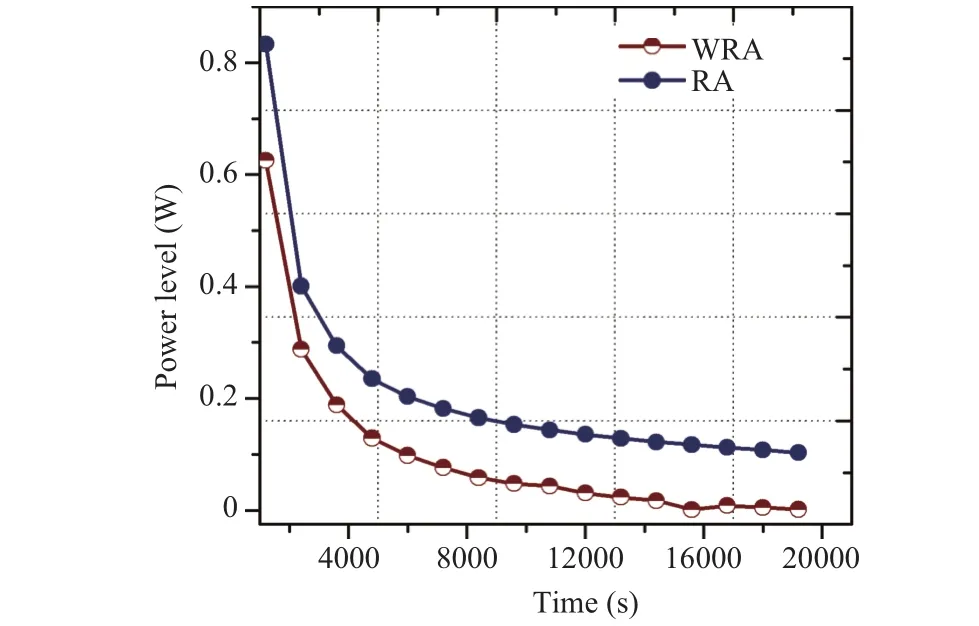
Fig. 5. Energy level due to power in sleep mode.
We have proposed the RA mechanism to save the power for the mobile phone as a mean to battery power reduction in two conditions: Power-ON and without power-ON means in the sleep mode in a mobile phone individually. We proposed the mechanism based on a power level comparison. Fig. 4 shows the power level comparison between RA and WRA in the power-ON scenario where WRA mechanism consumes 99.5% of the overall power and the proposed RA mechanism consumes 94.5% of the overall power within 5 hours. As the RA mechanism saves almost 5% of power consumption compared with the WRA method. So we can say that the applied WRA mechanism is less efficient than the RA method.And the without power-ON scenario means the sleep-mode condition. As shown in Fig. 5, the WRA mechanism consumes 98% of the overall power and the RA mechanism consumes 88% within 5 hours. So the RA mechanism almost saves 10%power compared with the WRA method. Hence, the RA mechanism has better power consumption in comparison with the WRA mechanism, and this saves high power consumption in the without power-ON means sleep mode in a mobile phone than that with power-ON.
According to different UE’s energy level, as we can see in Fig. 6, every single UE throughput increases and decreases because their power level is changing. And also,it adjusts the quality of the streaming multimedia contents depending upon the UE’s energy level. The quality of the multimedia content is controlled by adjusting the sending packet size as the constant bit rate (CBR) at the server. The energy level in UE is monitored by every 1 minute and the packet size is changed according to the UE’s extra energy level. Thus, it achieves overall slightly high energy saving with our proposed mechanism.
5.Conclusions
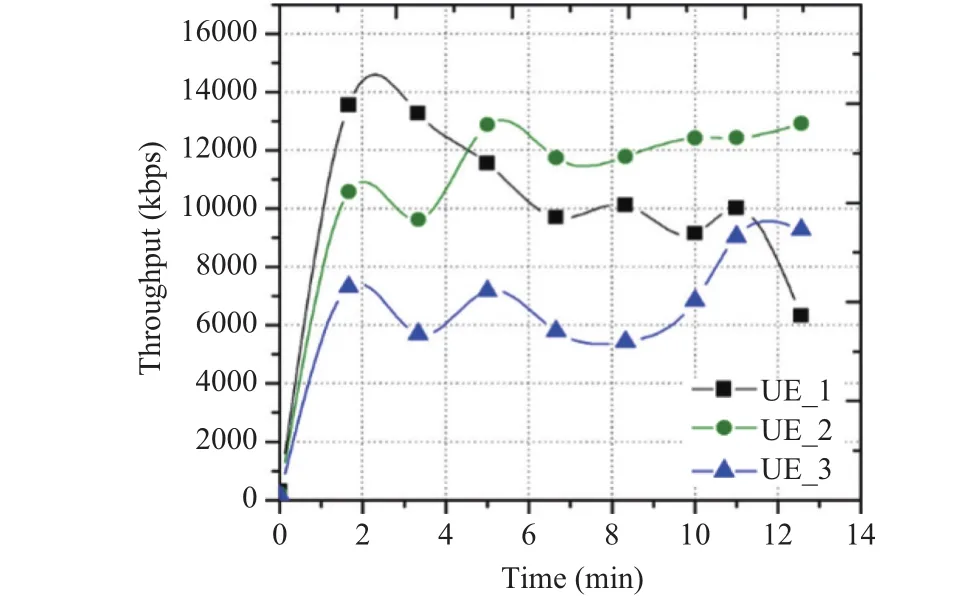
Fig. 6. Throughput vs. time.
In this paper, we studied the energy-aware multimedia streaming on mobile phones. A bit-RA based approach was presented to optimize the power consumption in the context of the green technology. By applying the energy consumption model to a comprehensive dataset, we show that LTE is much less power efficient than the other previous technology.However, we did not show the mechanism comparison with previous technology, but we have shown the battery power consumption on mobile devices based on streaming multimedia contents over LTE networks. Moreover, we have proposed an RA mechanism based on the remnant mobile power level as a mean to save battery power consumption. By comparing the RA and WRA based mechanisms, our results had successfully achieved low power consumption in both power-ON and without power-ON means in the sleep mode during streaming in LTE networks.
[1]B. Rashidi, C. Fung, and T. Vu, “Recdroid: A resource access permission control portal and recommendation service for smartphone users,” inProc. of the ACM MobiCom Workshop on Security and Privacy in Mobile Environments,2014, pp. 13-18.
[2]A. Sun, T. Wambach, A. G. Venkatesh, and D. A. Hall, “A low-cost smartphone-based electrochemical biosensor for point-of-care diagnostics,” inProc. of 2014 IEEE Biomedical Circuits and Systems Conf., 2014, pp. 312-315.
[3]A. R. Jensen, M. Lauridsen, P. Mogensen, T. B. Sørensen,and P. Jensen, “LTE UE power consumption model: For system level energy and performance optimization,” inProc.of 2012 IEEE Vehicular Technology Conf., 2012, pp. 1-5.
[4]A. Carroll and G. Heiser, “An analysis of power consumption in a smartphone,” inProc. of USENIX Annual Technical Conf., 2010, p. 21.
[5]Y. Liu, L. Guo, F. Li, and S. Chen, “An empirical evaluation of battery power consumption for streaming data transmission to mobile devices,” inProc. of the 19th ACM Intl. Conf. on Multimedia, 2011, pp. 473-482.
[6]R. Trestian, Q. T. Vien, P. Shah, and G. Mapp, “Exploring energy consumption issues for multimedia streaming in LTE HetNet small cells,” inProc. of IEEE the 40th Conf. on Local Computer Networks, 2015, pp. 498-501.
[7]S. Aghaeinezhadfirouzja, H. Liu, B. Xia, and M. Tao,“Implementation and measurement of single user MIMO testbed for TD-LTE-A downlink channels,” inProc. of IEEE the 8th Intl. Conf. on Communication Software and Networks, Beijing, 2016, pp. 211-215.
[8]M. A. Hoque, M. Siekkinen, J. K. Nurminen, and M. Aalto,“Dissecting mobile video services: An energy consumption perspective,” inProc. of IEEE the 14th Intl. Symposium on A World of Wireless, Mobile and Multimedia Networks, 2013,pp. 1-11.
[9]P. M. Eittenberger, M. Hamatschek, M. Großmann, and U.R. Krieger, “Monitoring mobile video delivery to android devices,” inProc. of the 4th ACM Multimedia Systems Conf.,2013, pp. 119-124
[10]E. Tan, L. Guo, S. Chen, and X. Zhang, “PSM-throttling:Minimizing energy consumption for bulk data communications in WLANs,” inProc. of IEEE Intl. Conf. on Network Protocols, 2007, pp. 123-132.
[11]R. Sanchez-Mejias, Y. Guo, M. Lauridsen, P. Mogensen, and L. A. Maestro Ruiz de Temino, “Current consumption measurements with a carrier aggregation smartphone,” inProc. of IEEE the 80th Vehicular Technology Conf., 2014,pp. 1-5.
[12]M. A. Hoque, M. Siekkinen, and J. K. Nurminen, “Energy efficient multimedia streaming to mobile devicesa survey,”IEEE Communications Surveys and Tutorials, vol. 16, no. 1,pp. 579-597, 2014.
[13]Q. Jiang, V. C. M. Leung, H. Tang, and H. S. Xi, “Energyefficient adaptive rate control for streaming media transmission over cognitive radio,”IEEE Trans. on Communications, vol. 63, no. 12, pp. 4682-4693, Dec. 2015.
[14]N. Khan and M. G. Martini, “Qoe-driven multi-user scheduling and rate adaptation with reduced cross-layer signaling for scalable video streaming over lte wireless systems,”EURASIP Journal on Wireless Communications and Networking, no. 1, pp. 93:1-23, 2016, DOI:10.1186/s13638-016-0584-6.
[15]M. Seufert, S. Egger, M. Slanina, T. Zinner, T. Hoßfeld, and P. Tran-Gia, “A survey on quality of experience of HTTP adaptive streaming,”IEEE Communications Surveys and Tutorials, vol. 17, no. 1, pp. 469-492, 2015.
[16]B. Dusza, P. Marwedel, O. Spinczyk, and C. Wietfeld, “A context aware battery lifetime model for carrier aggregation enabled LTE-A systems,” inProc. of IEEE Consumer Communications and Networking Conf., 2014, pp. 13-19.
[17]NTT DoCoMo,Views on Downlink Reception Bandwidth Considering Power Saving Effect in LTE-Advanced, 3GPP R1-090310, 2009.
[18]W. D. Doyle, “Magnetization reversal in films with biaxial anisotropy,”IEEE Trans. on Magnetics, vol. 2, no. 2, pp. 68-73, 1966.
[19]Z. Shen, A. Papasakellariou, J. Montojo, D. Gerstenberger,and F. Xu, “Overview of 3GPP LTE-advanced carrier aggregation for 4G wireless communications,”IEEE Communications Magazine, vol. 50, no. 2, pp. 122-130,2012.
[20]D. Musiige, L. Vincent, F. Anton, and D. Mioc, “LTE RF subsystem power consumption modeling,” inProc. of the 1st IEEE Global Conf. on Consumer Electronics, Tokyo, 2012,pp. 645-649.
[21]J. Huang, F. Qian, A. Gerber, Z. M. Mao, S. Sen, and O.Spatscheck, “A close examination of performance and power characteristics of 4G LTE networks,” inProc. of the 10th Intl. Conf. on ACM Mobile Systems, Applications, and Services, 2012, pp. 225-238.
[22]R. Kwan and C. Leung, “A survey of scheduling and interference mitigation in LTE,”Journal of Electrical and Computer Engineering, no. 1, pp. 1-10, 2010, DOI:10.1155/2010/273486
猜你喜欢
杂志排行
Journal of Electronic Science and Technology的其它文章
- Message from JEST Editorial Committee
- Modeling TCP Incast Issue in Data Center Networks and an Adaptive Application-Layer Solution
- Multi-Reconfigurable Band-Notched Coplanar Waveguide-Fed Slot Antenna
- High Power Highly Nonlinear Holey Fiber with Low Confinement Loss for Supercontinuum Light Sources
- Overview of Graphene as Anode in Lithium-Ion Batteries
- Pairing-Free Certificateless Key-Insulated Encryption with Provable Security
